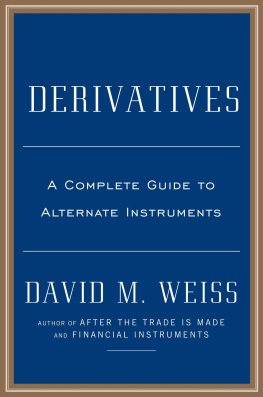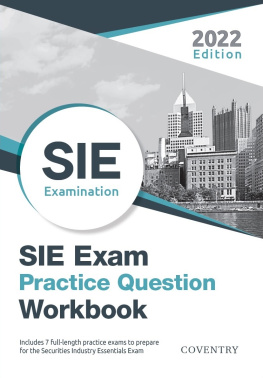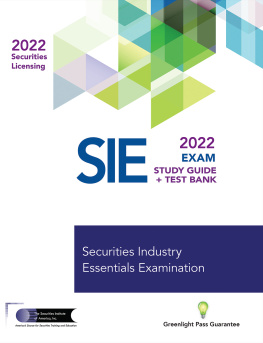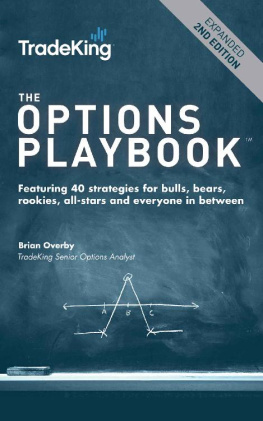Table of Contents
To my immediate world:
Marcia, Randi, Craig, Amy, Nicole, Jenna, and Carly
To an industry that I have enjoyed being part of for all these years, I am proud to be one of you. I trust this book is a worthy return on the investment that you made in me.
Thank you.
Preface
I have been fortunate to participate in an exciting and ever-changing industry. The dramatic changes that have occurred are borne out in the major differences that exist between the first and second editons and the second and third editions of this book. One edition, though 80% written, never made it to the publisher because the industry changed directions, necessitating a major rewrite. This edition, like the previous editions, is as up to date as the production schedule would allow.
The industry has changed in many ways since the last edition was published. Technology has played an ever-increasing role in our products and processes. Globalization, a new word then, is now an everyday term. Electronic trading is now a major force in the market. Structured products, once thought to be a strange, one-of-a-kind product, trade alongside other instruments. The efficiencies brought by technology on trade processing, settlement, and finance have permitted these products to be processed in a non-cost-offensive manner.
The growth of the institutional side of the business, which includes new types of entities, has made its own demands on the brokerage business. New trading strategies and complex order and reporting requirements have impacted operations. Their collective demands for more cost-efficient processes, both intrafirm and interfirm, have changed the way we conduct business.
This book captures the products and processes. The products that we trade are explained so that those who must work with them, or are interested to learn, will understand why they are issued and their features, issuance cycles, and trading patterns. These explanations will be valuable, both in business and in personal lives.
The marketplaces where these products trade are examined. The method of trading, who the market participants are and the differences in the types of orders, methods of execution, and methods of trade reporting are all brought out so that the reader better understands these segments of the process.
After the trade is made, the operation process begins. Trade date processes are focused upon. The preparation of trade for the settlement cycle is explored in detail. From trade figuration (monies involved in a transaction) to customer confirmation/affirmation, to the different systems that are used to effect comparison, the workings of the different clearing corporations and clearing banks are examined in detail.
On the clients side of the process, clients have responsibilities that must be satisfied in the opening and maintaining of their accounts and the ongoing operation of the same. What are DVP accounts? Who can have them? What systems are employed to process the transactions? These areas are covered in step-by-step examples.
Since margin-type accounts are part of the process, the book explains what margin is, how it functions, and what regulations guide it. Different products have different margin requirements. Equity and option margins are used to explain the different ramifications of market activity and client action on their margin accounts.
The various settlement functions and control and uses of securities and funds are the focus of the settlement portion of the book. The settlement of a trade requires the movement of security and money. The methods used by the industry to effect settlement as well as the processes used are a part of those chapters. The workings of Depository Trust and Clearing Corporation (DTCC) and the interaction of two of its divisions, National Securities Clearing Corporation (NSCC) and Depository Trust Company (DTC), are studied in depth. The workings of Fixed Income Clearing Corp (FICC), Option Clearing Corporation (OCC), clearing banks, and the Fedwire are also covered.
The methods used by a firm to finance security positions when it is able to lend securities, and why it does so are also reviewed. The use of repos and reverse repos both as financial tools and security lending vehicles are demonstrated.
Two of the most important records of the firm, the stock record and the general ledger are next explored as to their purpose, content, and use in operations. The types of records produced and methods and importance of balancing are exposed here. A chapter on brokerage accounting introduces the aforementioned section so that the reader can better understand those chapters.
Much of what we must do every day is established by regulation. The results of those actions become part of the firms financial and regulatory reporting requirements. These subjects are introduced to the reader.
My intention in updating this book is to give the reader an understanding of the many facets that occur after the trade is made. With this foundation the reader can better appreciate and respond to his working environment. I wish you luck.
CHAPTER I
Overview of the Industry
The financial industry is complex, as it is comprised of many aspects. While there are general headings, such as securities, brokerage firms, and marketplace, when we look below the surface we see how multifaceted is the world of finance. The industry is changing, of course, but the degree and speed at which it is changing would have been considered impossible a few years ago. The cause for all this change is difficult to focus in on. We are in a chicken-and-egg scenario. Did technology bring about these changes, or did changes in our daily lives bring the need for technological improvements? While we can all agree as to the role technology has played, we may not be able to agree on which aspect has had the greatest impact.
The information highway allows anyone, anywhere to receive up-to-date information about any company as well as any news that may affect their investments. This is not only obtainable on desktop and laptop PCs directly from the Web, but certain television stations have continuous market news throughout the entire day. Included with the market news are interviews with corporate leaders, economists, and industry analysts from broker/dealer firms and other financial entities. From the Web, not only can one obtain a quote, which a few years ago was considered a major breakthrough, but one can also receive a securitys price range over a period of months, technical and fundamental research, and the latest news and charts. Recently there has arisen a way for the public to enter buy and sell securities orders via the Web.
Globalization is a force to be reckoned with. Whoever thought a few years ago that Europe would be working toward a single-currency economy? These were countries that, once upon a time, fought each other on a regular basis. Whoever thought that they would give up their precious currencies? Words such as lira, franc, and mark are aligned with cannon balls, wooden fighting ships, and dinosaurs. Out of the decline of Communism have come new markets and new stock exchanges. Even China, which remains communistic, is modernizing its financial markets.
At first, technological advances were applied to sales and other revenue-producing areas of the firm. Early on, the sales force was equipped with Quotron and similar devices that allowed

















